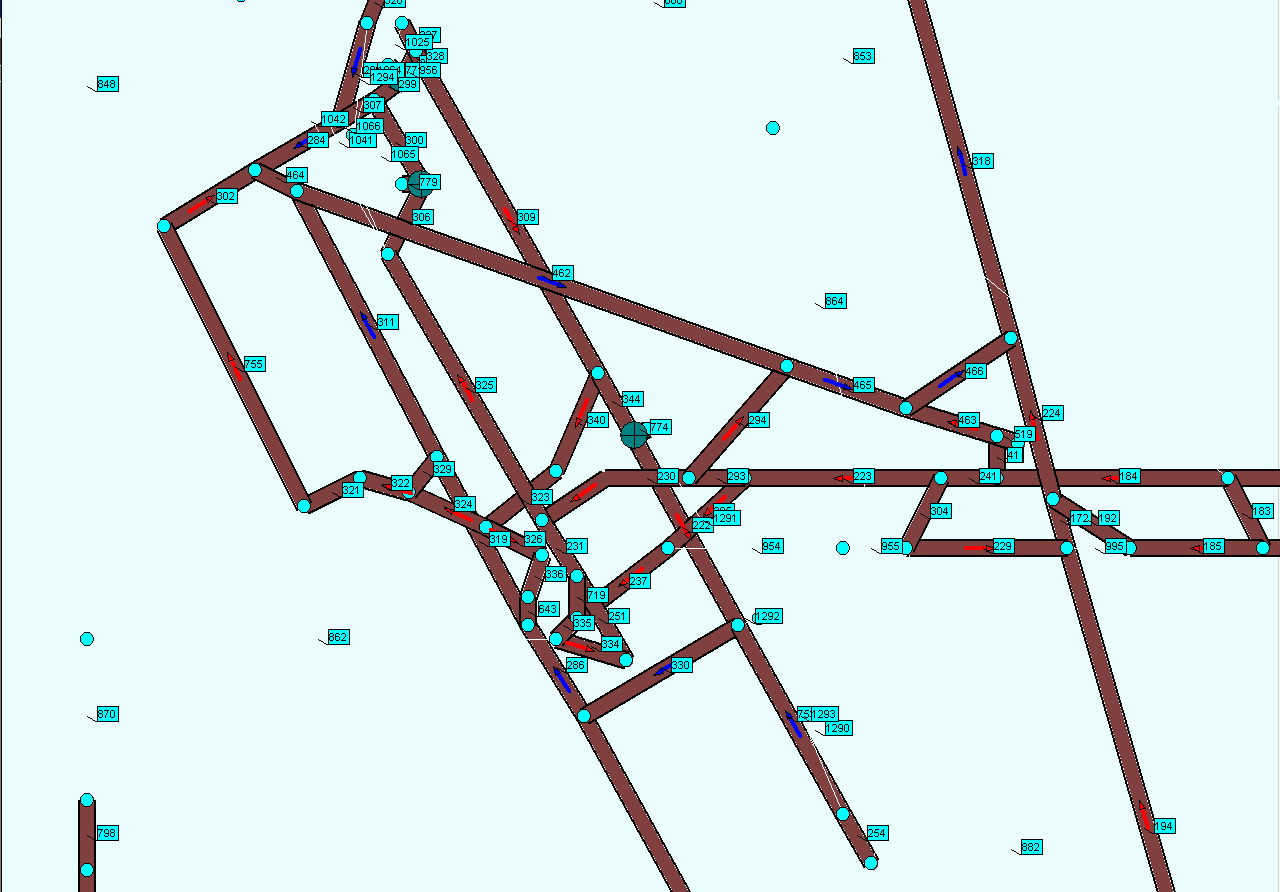|
|
||||
Related abstract |
|
Related abstract of degree paper
Relevance and the purpose of work
Dip-working panels have become the most wide — spread in Donbass mines. At the same time fires in dip-working panels result in to the most drastic consequences generated, in most cases by waft spontaneous turnover as caused by thermal drop of ventilation pressure.
Therefore researches of airing stability in fires in inclined workings are conducted during preparations of ERP in mines. At the present day these researches are carried out with the help of special saftwear. One of such them programs is the Complex of programs “IRS Ventilation — ERP”.
Influence of fire on ventilation of inclined workings
In contrast to natural ventilating pressure the thermal pressure arising at a fire in inclined or vertical workings has local character as gases which are formed at a fire moving along the working are intensively cooled. Let's admit, the fire has arisen on a part of dipping drift (fig. 1,1) along which the fresh stream moves adown. We will consider possible modes of dip-working panel ventilation under the influence of thermal pressure.
Fig. 1.1 Simplified circuit of the dip-working panel
Fig. 1.2 Graph to determination of thermal pressure influence of fire on ventilation of the dip-working panel Let's assume that the head-flow characteristic of dip-working panel is expressed by curve 1 (fig. 1.2). The characteristic of such conditional fan which worked on a network of workings is understood as the head-flow characteristic of dip-working panel, having the same impact on them on their the same impact, as well as the real fan of the main airing. The normal mode of dip-working panel ventilation (before fire) is defined by crossing the head-flow characteristic with the aerodynamic characteristics of dip-working panel 5, described by the equation h=RQ2, Where h — dip-working panel pressure, Pa ;R — general resistance of workings of dip-working panel, Ns / m ; Q — general air-flow in workings of dip-working panel, m3/s. Figure 1.2 shows standard mode of ventilation represented by a point A, which co-ordinates OM and АМ corresponding to the values of air-flow and pressure. With fire occurrence thermal pressure to which can assimilate to work of the additional fan installed in the dipping drift. The characteristic of this fan in h — Q coordinates for each moment of time represents right line parallel to X-axis. The new mode of dip-working panel ventilation can be found, taken advantage of activated network method. Its essence consists in that the aerodynamic characteristic is castup (subtracted) with one of draught sources. Having summarized the characteristic of a network and the characteristic of thermal pressure, we will receive the curve 4, which represents activated ventilation characteristic of a dip-working panel network. Action of thermal pressure leads to decrease of air — flow which arrives in dip-working panel with cotemporary increase of pressure of fan accruing which falls on dip-working panel. The latter is consumed for overcoming thermal pressure and on air moving along workings. h =h +RQ2, Where h — thermal pressure,Pa;Q — air-flow, m3/s. Point C (fig. 1.2) is critical as it divides area of possible modes of dip-working panel ventilation into the zone of a normal direction of a ventilating stream located on the right and the zone of the overturned stream located on the left. Stability of ventilation of inclined workings at fires. Air reversal under the influence of thermal pressure occurs in the case when its size exceeds some critical value. The maximum pressure which can be created by the main fan can create in productive working is called critical. Reversal of a ventilating stream under the influence of thermal pressure will not occur, if the inequality is satisfied. ht< hkp Where ht — thermal pressure of a fire, Pa; hkp — critical pressure of working, Pa 
Animation1 — Propagation of fire gases on workings Red — emergency working Yellow — a zone of expansion of fire gases before overturning of a ventilating stream Blue — a zone of expansion of fire gases after overturning of a ventilating stream. Measures an increase of ventilation stability of workings with descending air motion. If it is determined as a result of calculation that ventilation stream reversal may occur due to the influence of thermal pressure it is necessary to provide for measures to increase ventilation stability. It is possible to increase ventilation stability of inclined workings at fire by two methods: reduction of thermal pressure or increase of critical pressure. However thermal pressure alteration can be influenced to a rather limited extent. Therefore the second method- critical pressure increase is of practical use. In practice critical pressure of inclined working can be increased as follows: — by increasing resistance of workings with fresh air flow situated in parallel to the analyzed one; — by installing sealings in cross slits connecting parallel inclined workings with the same direction of flows; — by increasing air flow of the main fan; — by short-circuiting ventilation streams downstream the fire source. Conclusions: The paper investigates stability of inclined workings with descending airing during fires. Pressure characteristics and their alteration with airing stability increase. Measures on increase of ventilation stability of workings with descending air motion are suggested. |
|
|
© DonNTU — 2010 Zemlianskaya L. |


